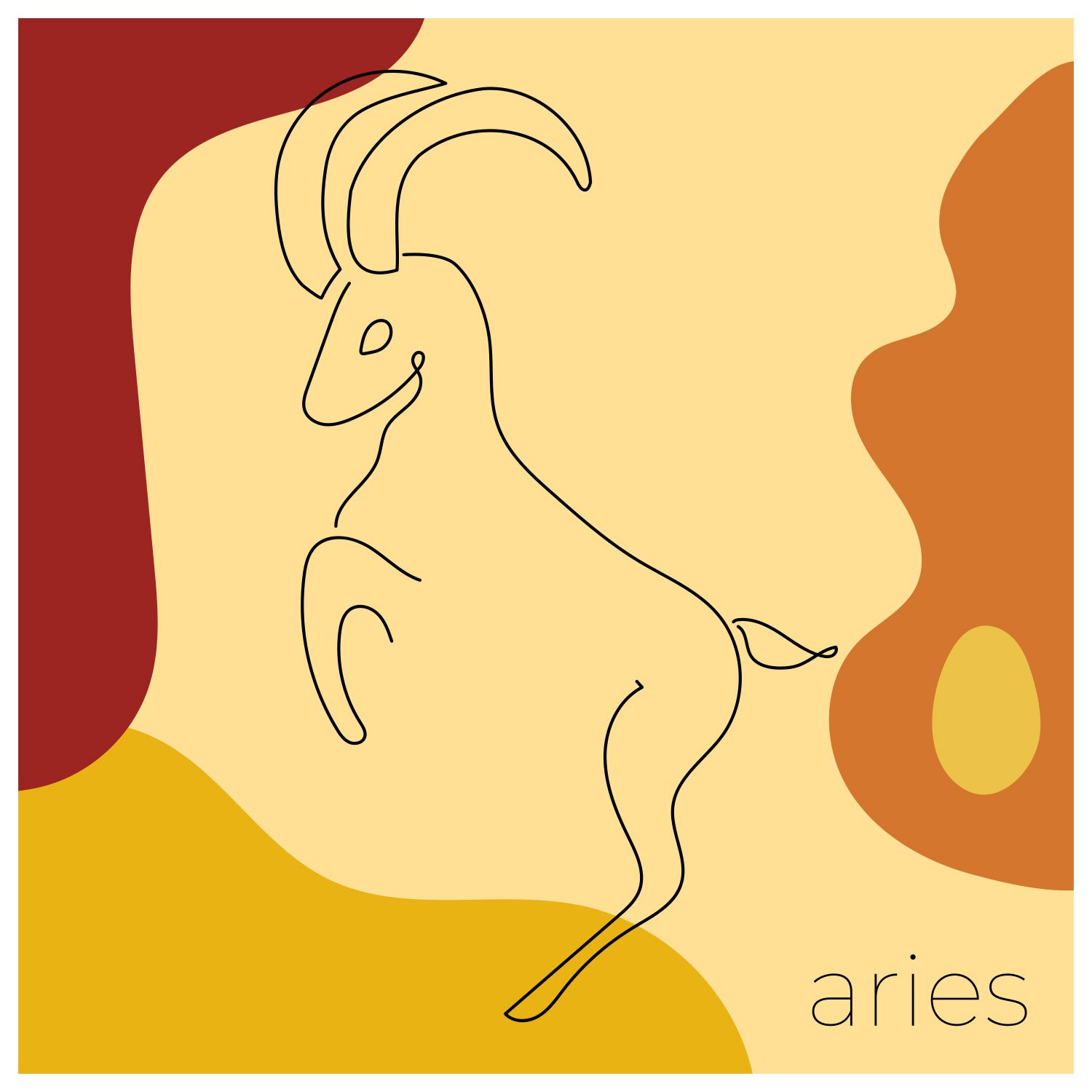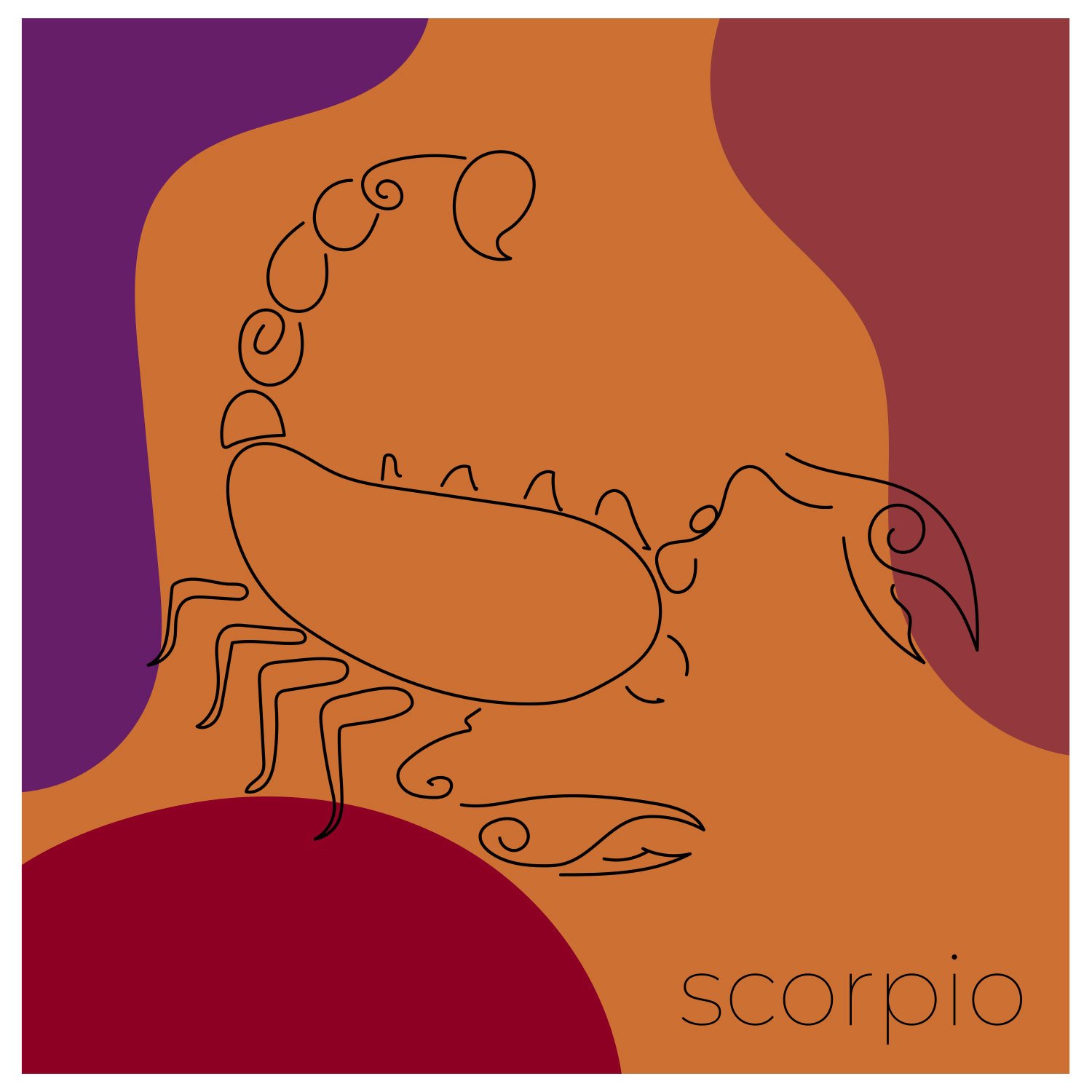Houseplants are more popular than ever, but the growing number of choices can be intimidating–even for a reasonably experienced plant parent. Ever wonder if there are cosmic links between your favorite houseplant and the stars above? Or perhaps you’re trying to find the right plant to give an astrology lover in your life?
Read on to learn the basic care and facts for twelve common houseplants along with their astrological matches.
Aries: Spineless yucca
Yucca gigantea (Yucca elephantipes)
Aries, symbolized by the Ram, is a fire sign ruling those born between March 20 and April 19. People born under this sign are said to be energetic, passionate, competitive, and natural leaders; as such, the bold appearance and commanding presence of Yucca gigantea make it an excellent houseplant for an Aries.
Native to arid and semiarid regions of the tropical Americas, the spineless yucca features one or more thick trunks topped by attractive sprays of thin, pointed leaves. While they rarely bloom when grown indoors, the flowers of Yucca gigantea feature prominently in indigenous cuisines throughout Central and South America. These plants prefer hot, sunny, and dry growing conditions–an environment that matches up with a fiery sign like Aries. When grown as a houseplant in temperate regions, the spineless yucca does best in a south- or west-facing window where it gets plenty of direct sunlight. Be sure not to overwater them, as they are susceptible to root rot if not allowed to dry out between waterings.
Take care to not get in the way of the spineless yucca’s pointed leaves, just as you wouldn’t want to provoke an Aries by challenging their independence–in both cases, you may get poked! Nonetheless, given the right growing conditions, the spineless yucca will provide a strong focal point for a sunny room.
Taurus: Aloe vera
Aloe vera
People whose birthdays fall between April 20 and May 20 are born under Taurus, an earth sign symbolized by the Bull. Common traits ascribed to Taurus include groundedness, stability, patience, and a love for routine. Aloe vera makes a great plant companion for Taurus due to its resilience and earthy nature.
Aloe vera originates from the Arabian peninsula but has naturalized in warm climates around the world. As a houseplant in temperate areas, Aloe vera prefers direct sunlight and well-draining soil. The plant features long, graceful blue-green leaves that are thick and fleshy–an adaptation to survive drought conditions. It boasts showy flowers on tall spikes during summer but is unlikely to bloom indoors unless given lots of heat and light.
Aloe vera is also a commercially important crop for use in food products, cosmetics, and topical medications–you may have heard of aloe gel as a cooling salve for minor burns. These properties match not only Taurus’s affinity for comfort and luxury but also their innate sense of caring for those around them. However, bullheaded Taurus can be quite stubborn when pushed, just as Aloe vera plants have sharp spines along their leaves that keep them from being treated carelessly. Give Aloe vera the space and sun it needs to thrive, and it will take care of you in return.
Gemini: Air plant
Tillandsia spp.
Gemini, symbolized by the Twins, is an air sign for those born between May 21 and June 20. Often referred to as the “social butterfly” of the zodiac, Gemini is characterized as adaptable, intelligent, charismatic, and perceptive. The unusual and charming form of Tillandsia is an excellent representative for airy Gemini.
Tillandsia species, commonly called air plants, are epiphytes, meaning they need little to no soil to grow. In their native habitats in the tropics and semi-tropics of the Americas, air plants are usually found growing on larger plants, but can also thrive on bare rock or even human-built structures–provided they have the right amount of light and moisture. This exceptional adaptation is fitting for Gemini, who have the seemingly superhuman ability to blend into even the most challenging social environments with relative ease.
Air plants have recently exploded in popularity as houseplants for their relatively easy care and lack of need for soil. Most varieties prefer high humidity and bright, indirect light. Regular mistings (best done in the morning) keep Tillandsia well-hydrated. A fundamentally social sign, Gemini loathes being alone; Tillandsia benefits from having plant companions as well. As such, Tillandsia perform best when grouped together in terrariums or when paired with other plants, such as nestled among the aerial roots of a Monstera or draped across the branches of a Ficus.
Cancer: African violet
Streptocarpus sect. Saintpaulia spp.
Symbolized by the Crab, Cancer is a water sign representing people born between June 21 and July 21. Cancer is best described as the emotional manifestation of the Crab: a hard outer shell concealing a tender inner self. Cancer is characterized as firm, yet sensitive and deeply in tune with both their own emotions and the emotions of those around them. This seemingly contradictory blend of characteristics is well-represented by the delicate yet tenacious African violet.
Saintpaulia, a subgenus of Streptocarpus, are called African violets for their colorful flowers and native home in the tropical cloud forests of Tanzania and Kenya in eastern Africa. Like Cancer, African violets have a reputation for being finicky and high-maintenance but are actually quite durable and forgiving–which explains their ubiquity as houseplants worldwide. African violets perform best in bright, indirect light, high humidity, and consistent temperatures between 65 and 80 degrees Fahrenheit. Bottom-watering (as opposed to pouring water over the top of the plant) helps to avoid leaf discoloration. African violets bloom almost continuously when kept slightly pot-bound (meaning that the root ball remains enclosed within its pot without too much excess soil), just as Cancer thrives with the support of their tough outer shell.
Leo: Bird-of-paradise
Strelitzia spp.
Leo is a fire sign ruling those born between July 22 and August 22. Represented as the Lion, Leo is radiant, charming, ambitious, and loves to be the center of attention. As such, Leo is typically a natural leader and gifted performer. There is no better houseplant to represent a powerful Leo than the showy foliage and dazzling blooms of Strelitzia, or bird-of-paradise.
Strelitzia reginae, native to South Africa, is a common ornamental plant in warm or tropical climates worldwide. In more temperate areas, it is a popular and commanding houseplant, with large leaves reaching up to six feet tall. The bright orange petals of S. reginae flowers never fail to catch the eye. Strelitzia nicolai, the white-flowering bird-of-paradise, can grow much larger, but is less likely to flower when grown indoors unless allowed to reach a more mature height (10+ feet). Appropriate for fiery Leo, Strelitzia loves heat and light and is best sited where it receives direct sunlight, such as in a south- or west-facing window (or outside on a sunny patio during the summer months). Keep it slightly pot-bound to encourage flowering. Even when not in flower, the striking form of Strelitzia brings a bold presence to any room, just like Leo!
Virgo: Fiddle-leaf fig
Ficus lyrata
Virgo, represented as the Virgin, is an earth sign for those born between August 23 and September 22. Virgo is characterized as intelligent, organized, and determined. With its reputation for being high-maintenance, the fiddle-leaf fig makes an ideal plant companion for detail-oriented Virgo.
Ficus lyrata, or the fiddle-leaf fig, gets both its common name and species name for its shapely lyre-shaped leaves. A large tree native to the tropical lowland rainforests of western Africa, the fiddle-leaf fig is an enormously popular houseplant worldwide. When grown indoors in temperate regions, the fiddle-leaf fig rarely reaches its maximum size, but still can grow up to twelve feet tall if given adequate space.
Fiddle-leaf figs can be quite finicky, requiring the perfect balance of elements to thrive. They like bright light, but not direct afternoon sun; the root ball needs to be kept evenly moist and never be allowed to dry out. They also benefit from regular mistings on the foliage, which keeps the leaves glossy and green. Once placed in its ideal spot, it’s best to not move a fiddle-leaf fig, as they will often respond dramatically to being moved by dropping leaves. Accordingly, fiddle-leaf figs are excellent houseplants for attentive plant parents–especially Virgo, whose penchant for perfectionism will ensure that the fiddle-leaf fig will have everything it needs to thrive.
Libra: Orchid
Phalaenopsis spp.
Air sign Libra represents those born between September 23 and October 22. Libra is all about balance, and is thus represented by the Scales. A complex and contradictory sign by its very nature, Libra is best characterized as fair-minded, charismatic, compassionate, and empathetic. With delicate flowers balanced on long, graceful stems, the Phalaenopsis orchid is thus a perfect pairing for stylish Libra.
While orchids encompass a huge family of plants with innumerable forms, the name “orchid” is most commonly ascribed to the showy flowers of orchids in the genus Phalaenopsis, sometimes referred to as “moth orchids” for the moth-like appearance of their large, showy flowers. Phalaenopsis are indigenous to tropical southeast Asia and Oceania. Most are epiphytes in their native environments, meaning that they grow upon other, larger plants rather than in soil. When cultivated indoors, the long, thick roots are usually potted up in a combination of moss, bark, and perlite, which keeps the roots moist but still allows for good air circulation. Allow the moss to dry between waterings, as the roots will rot if kept constantly wet. Phalaenopsis prefer medium to bright indirect light and high humidity, which can be satisfied by regular mistings.
Befitting for charming Libra, the long-lasting flowers of Phalaenopsis orchids are arguably the most beautiful among common houseplants. Libra is also ever-changing to best fit their social surroundings, which matches the immense diversity of flower colors and forms among Phalaenopsis. An elegant Phalaenopsis orchid perched on a bookshelf will bring the right aesthetic into any space for breezy Libra.
Scorpio: Pitcher plant
Sarracenia spp.
Represented by the Scorpion, water sign Scorpio rules those born between October 23 and November 21. A perpetually misunderstood sign, Scorpio is characterized as coldly analytical, distant, and in-tune with the darker aspects of human nature; however, that’s just what Scorpio wants you to think. Get close to Scorpio, and they are revealed to be exceptionally deep and intensely caring. The sinister allure of the pitcher plant makes an excellent companion for mysterious Scorpio.
Sarracenia is a genus of carnivorous plants that obtain most of their nutrients by capturing and digesting insect prey through use of lurid, pitcher-shaped leaves. Attracted to the color, scent, and/or nectar of the plant, insects fall or crawl into the deadly pitchers of Sarracenia and are slowly digested through enzymes at the base of the pitcher. This remarkable adaptation allows Sarracenia to thrive in the waterlogged, nutrient-poor soils of their native bogs and wetlands across North America. As a houseplant, pitcher plants require a great deal of bright light (direct sun is ideal), such as in a sunny south-facing window. Plants also need to be kept in a few inches of standing distilled water (or rainwater) at all times.
The unusual charm of water-loving Sarracenia pairs well with a water sign like Scorpio, and its unique form and habit match the enigmatic nature of its zodiac companion. Carnivorous plants like Sarracenia demonstrate an irresistible pull to not only their insect prey, but to any willing to venture into the dark side of the houseplant world.
Sagittarius: Snake plant
Sansevieria trifasciata (Dracaena trifasciata)
Sagittarius, a fire sign represented by the Archer, governs those born between November 22 and December 20. A highly dynamic sign, Sagittarius is characterized as fearless, aspirational, and infinitely curious. Adventurous by nature, Sagittarius has the raw strength and optimism to overcome any challenge. The sharp forms and unparalleled durability of the snake plant match the powerful energy of Sagittarius.
Sansevieria trifasciata (renamed Dracaena trifasciata in 2017) features tall, stiff, reptilian leaves that are beautifully variegated in shades of green, black, yellow, and cream, depending on the cultivar. Native to tropical West Africa, the snake plant is exceptionally tough, which has led to its widespread use as an ornamental plant around the world. Its succulent leaves grow from fleshy tubers called rhizomes, which enable the plant to withstand long periods without water. While it prefers bright indirect light, the snake plant is also notable for its tolerance of extreme low light conditions–which is why it can be commonly spotted in large spaces with little natural light, such as offices and shopping malls.
Besides having spiritual significance in the Yoruba religion of West Africa, the tough, durable plant fibers of Sansevieria leaves have been gathered for centuries by humans for use as bowstrings. Indeed, one of the plant’s common names in its native range is “viper’s bowstring hemp” for this very reason. As Sagittarius is represented by the Archer, the snake plant’s connection to archery makes it the perfect plant for its astrological companion.
Capricorn: ZZ plant
Zamioculcas zamiifolia
Capricorn is an earth sign governing those born between December 21 and January 19. Characterized as responsible, practical, disciplined, and the ultimate perfectionist, Capricorn is symbolized by the Sea Goat, a mythical creature with the head and forelegs of a goat and the tail of a fish. The best plant match for Capricorn is the ZZ plant, whose thick, arched stems and glossy leaves invoke the horns of a goat and the scales of a fish.
Zamioculcas zamiifolia, sensibly abbreviated to “ZZ,” is a tropical succulent native to the eastern coast of Africa. It features thick, graceful stems with glossy green leaves arising from thick rhizomes that are remarkable in their ability to store water. This adaptation allows the ZZ plant to endure drought conditions with ease and makes it an excellent choice for the more inattentive plant parent. ZZ plants are also exceptional in their ability to endure very low light conditions, though plants will usually stretch out or suffer leaf discoloration if left in the dark for too long. A popular cultivar of the ZZ plant, called ‘Raven,’ features glossy black leaves that sharply contrast with new growth that starts out lime-green and slowly matures to black.
The durability and extreme ease of care of the ZZ plant makes it an ideal companion for sensible Capricorn. With Capricorn’s reputation for being the most hard-working and goal-oriented sign, the ZZ plant is the most practical choice to adorn their space.
Aquarius: Bromeliad
Guzmania spp.
An air sign representing those born between January 20 and February 17, Aquarius is symbolized by the Water Bearer. Aquarius is usually described as intelligent, idealistic, progressive, and utterly unique. Bromeliads, with their peculiar adaptations and stunning forms, are the perfect plant for quirky Aquarius.
Among common houseplants, the name “bromeliad” typically describes the Guzmania genus of plants, which includes over a hundred different species. As close relatives of Tillandsia (air plants), Guzmania bromeliads are also epiphytes, meaning they need little or no soil matter to grow. In their native range spanning across the tropical Americas, Guzmania bromeliads are often found growing upon larger plants in warm, humid conditions. The plants consist of a single rosette of long green leaves that transition to brightly-colored bracts (modified leaves) that house the plant’s delicate flowers. The bracts of Guzmania are quite attractive, coming in a rainbow of different colors. Once the parent plant flowers, it dies and is replaced by smaller “pups” that grow from the sides of the original plant.
One of the most unique features of Guzmania bromeliads is what links it so strongly to Aquarius, the Water Bearer: between the bracts and leaves of the plant are a series of small “cups” that hold water. Besides being essential for the plant’s health, these cups of water also serve as life-giving reservoirs for other plant and animal life in Guzmania’s native habitats. With such a clever and innovative adaptation, a Guzmania bromeliad makes the perfect plant companion for Aquarius.
Pisces: Calathea
Calathea spp.
Represented by twin fish, Pisces is a water sign for those born between February 18 and March 19. Pisces is characterized as creative, elusive, fluid, and sensitive to the world around them. The colorful leaves and mystical nature of Calathea make it an excellent match for dreamy Pisces.
There are dozens of species of Calathea, all native to the tropical Americas. They feature masses of relatively large leaves that come in a stunning array of colors and patterns. As they are found on the damp forest floor of tropical rainforests, Calathea grown indoors prefer low to medium indirect light and high humidity. Just as Pisces is regarded as a highly emotional sign, Calathea has a reputation for being sensitive to inconsistent care, with leaf discoloration or leaf loss resulting from too much (or too little) water and light. Find the right balance, and Calathea will thrive.
A common name for Calathea is “prayer plant,” which refers to the plant’s tendency to fold its leaves up (as if in prayer) at night, and then spread them out in the morning to reposition themselves in the light of a new day. As Pisces is the twelfth and final sign of the zodiac, it is said to hold a bit of each of the other eleven signs that precede it, giving Pisces a reputation for possessing near-supernatural depth. The mutable nature of both Calathea and Pisces makes them a match made in the heavens.
Note: dates given for each sign are for 2023–to determine your exact sign, you’ll need to look up dates for your birth year.













